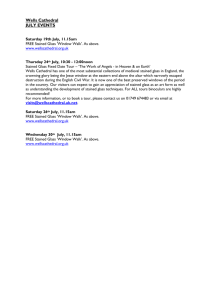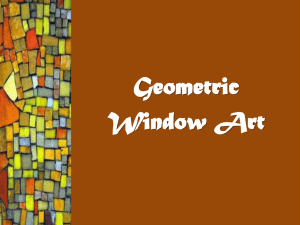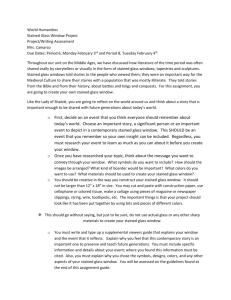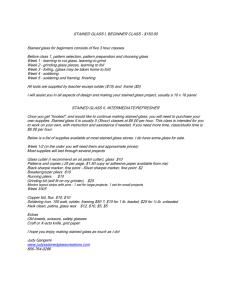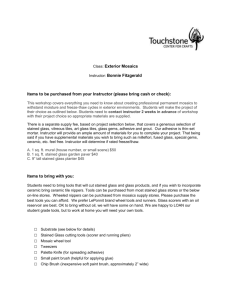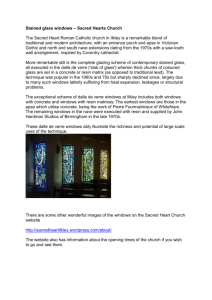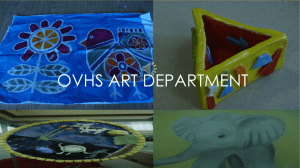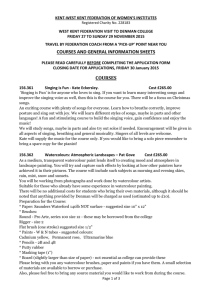NCEA Math Lesson Plan Grade: 9-12 Subject: Mathematics Domain
advertisement
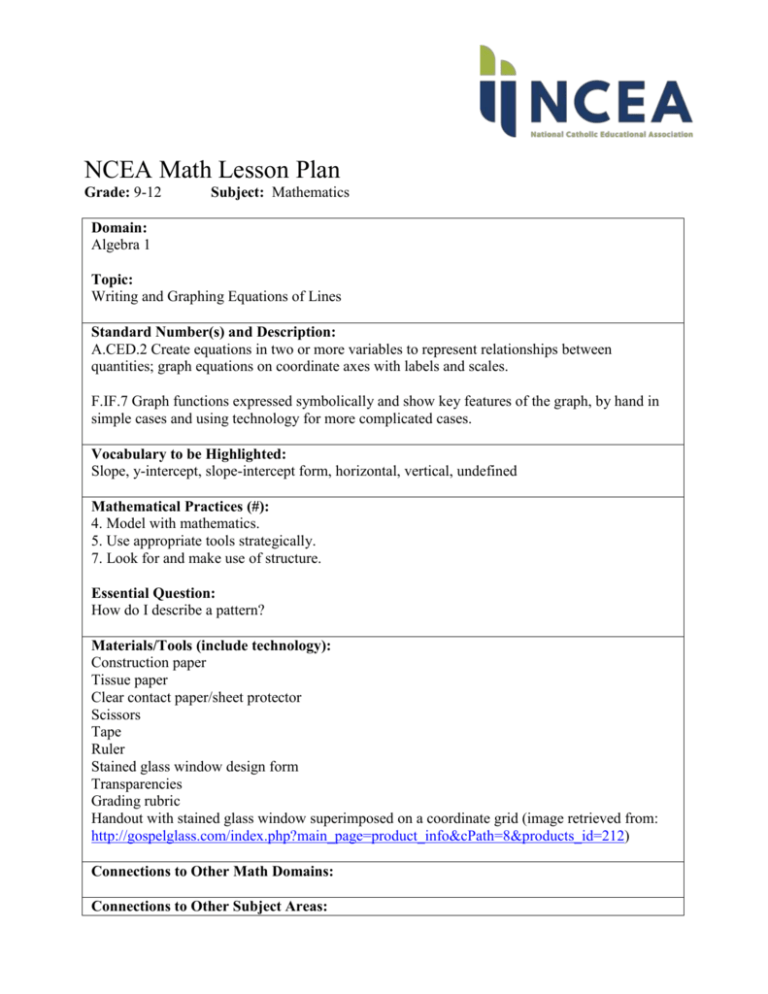
NCEA Math Lesson Plan Grade: 9-12 Subject: Mathematics Domain: Algebra 1 Topic: Writing and Graphing Equations of Lines Standard Number(s) and Description: A.CED.2 Create equations in two or more variables to represent relationships between quantities; graph equations on coordinate axes with labels and scales. F.IF.7 Graph functions expressed symbolically and show key features of the graph, by hand in simple cases and using technology for more complicated cases. Vocabulary to be Highlighted: Slope, y-intercept, slope-intercept form, horizontal, vertical, undefined Mathematical Practices (#): 4. Model with mathematics. 5. Use appropriate tools strategically. 7. Look for and make use of structure. Essential Question: How do I describe a pattern? Materials/Tools (include technology): Construction paper Tissue paper Clear contact paper/sheet protector Scissors Tape Ruler Stained glass window design form Transparencies Grading rubric Handout with stained glass window superimposed on a coordinate grid (image retrieved from: http://gospelglass.com/index.php?main_page=product_info&cPath=8&products_id=212) Connections to Other Math Domains: Connections to Other Subject Areas: Church history Art Design Religion Catholic Identity Component: Students will understand the use of stained glass windows in the Church to illustrate Catholic teachings and traditions. Resources (attachments): Introduction video: “Catholic Customs-Stained Glass” https://www.youtube.com/watch?v=FVpwsuK 1E Project introduction: “How to Build a Stained Glass Window” https://www.youtube.com/watch?v=9JCk308xW14 Activities/Timeline: Entry Activity: Display the following question as students enter the room: “What is the purpose of art in the Church?” Share this quote from Pope Francis: In the Church “art in all its forms, does not exist only for simple aesthetic enjoyment but because, through art the Church in every moment of history and in every culture, explains and interprets revelation for the good of the People of God. Art in the Church fundamentally exists for evangelization.” After discussion, show the four-minute video on stained glass as a Catholic custom. Lesson Description: Introduce the students to the importance of art and specifically the use of stained glass windows in the Catholic Church. The entry activity will help students express their current understanding of the use of art in the Church and introduce the teachings of Pope Francis on this topic. The next activity involves determining the equations of lines of a given stained glass window. Students will work in groups to identify the slope-intercept form of the equations of given lines. Students should have prior knowledge of the concept of slope-intercept form and the terms slope and y-intercept, however an informal pre- assessment would be helpful using questions such as “What does slope represent?” “What do you remember about positive, negative, zero, and undefined slopes?” “What is an intercept?” and “What is slope-intercept form?” Next, the students will view a video on how to build a stained glass window. This video shows the steps from design to completion. Students will use this information to begin the design of their own stained glass window. For kinesthetic learners, the next part of the lesson has students designing their own stained glass window. Provide graph paper to the students to create their design. Students will need to record the equations of the lines that they use. Encourage students to use a minimum of eight lines in the design. Students may include an icon or image in their window if they choose. At this point, students will create an artistic rendering of their stained glass window using tissue paper and construction paper. This will be a formal assessment. Use a rubric for grading the project. Modifications/Differentiation: Visual accommodations: Give students who are not able to see the board paper sheets containing the entry question, and, subsequently, the relevant quote from Pope Francis. Share the link to the YouTube video for students to view on a personal computer. Auditory accommodation: The YouTube video contains text for reading. Physical accommodation: Students may assist each other with tasks while working in pairs or small groups. Differentiation: Students who would benefit from additional rigor may describe similarities and differences in the lines and the related slopes and y-intercepts. Technology Adaptation: Students may use graphing calculators, desmos, or any other graphing tool to create their design before putting it to paper. Formative Assessment (what to look for, how/when to look): Students will present their stained glass window to the class, explaining their design. Students will have the opportunity to ask questions about other students’ designs. Teachers may use this as a formal or informal assessment. The lesson concludes with a formative assessment on the students’ ability to write the slopeintercept form of equations of the lines that construct the stained glass art. Summative Assessment:
